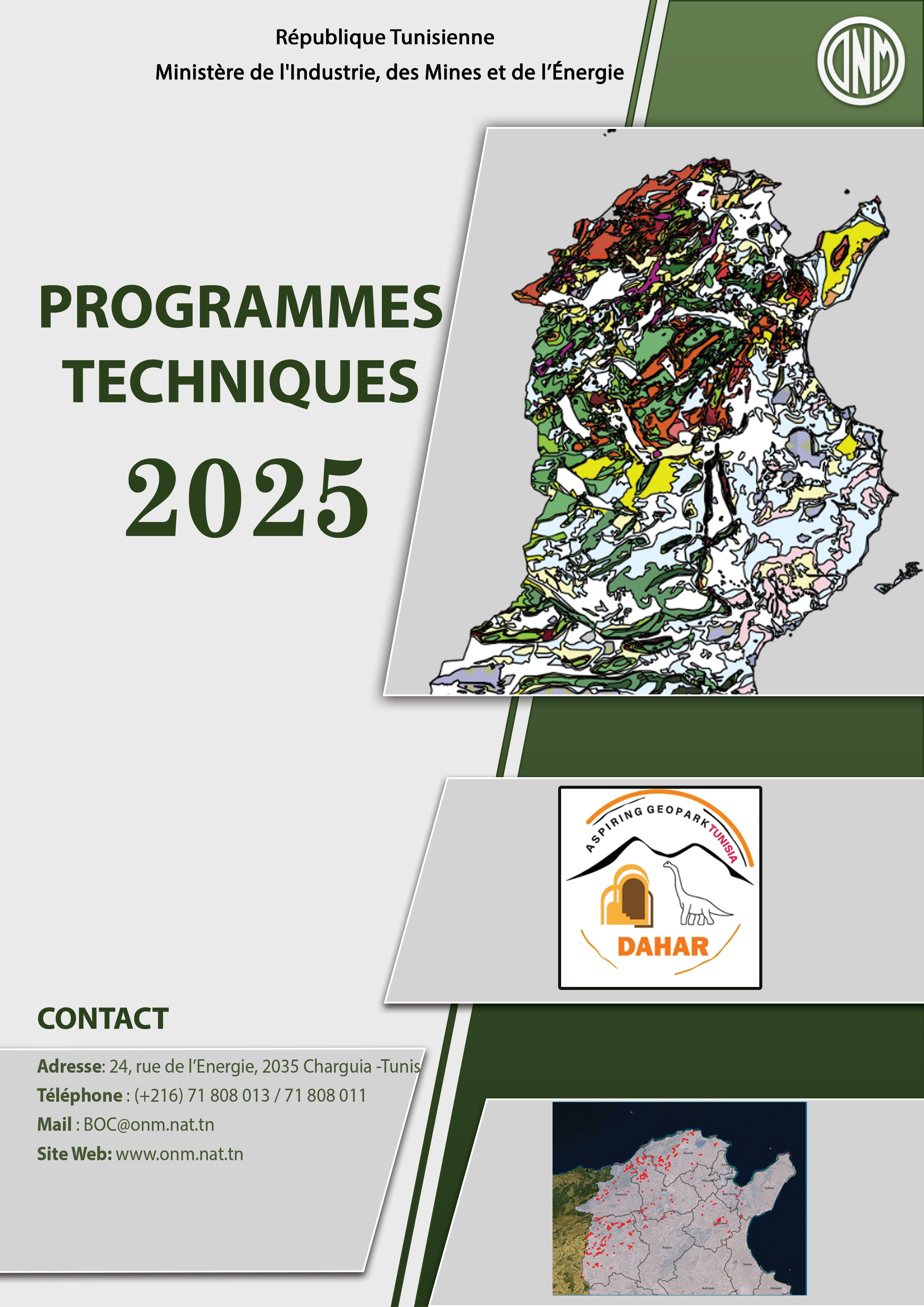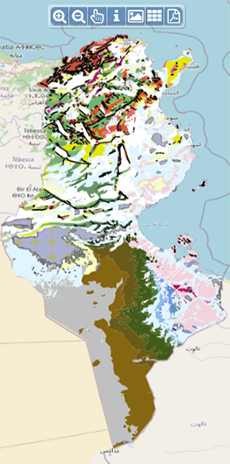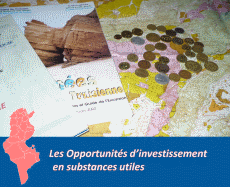| Programme annuel & rapport de suivi technique |
-

Rapport d'activités 2024
-

Programmes Techniques 2025
|
| Géocatalogue |

|
| Appels d'Offres |
-

Annonce d'attribution Marché à procédure simplifiée AO01/2025
-

DESIGNATION D’UN REVISEUR COMPTABLE POUR LES EXERCICES 2025-2026-2027
|
|
Investir en Tunisie |


|
|
|
|
|
::
Documentation and Editions
>>
Research library
|
| |
|
[
Search by author
]
[
Search keyword
]
[
Search by index
]
[
Search by category
]
|
title of the reference :
|
Silicification of sulphate evaporites and their carbonate replacements in Eocene marine sediments, Tunisia :
|
|
Publication Date:
|
2006
|
|
Author :
|
Henchiri Mohsen, Slim-Shimi Najet
|
|
Catalogue type :
|
Livre
|
|
Catalogue reference :
|
Vol. 53 (NLD) Sedimentology Vol. 53 Silicification of sulphate evaporites and their carbonate replacements in Eocene marine sediments, Tunisia : two diagenetic trends. Samples of chert nodules, diagenetic carbonates and evaporites (gypsum/anhydrite) collected from the gypsiferous limestones of the Kef Eddour Member (Ypressian-Priabonian) near Metlaoui and Sehib (Tunisia) show selective silicification with great variety in the silicified by products. Which support an organic origin for the carbon, carbonates replaced evaporites microbially through bacterial sulphate reduction. The microbial diagenitic replacement of evaporites (baclerial sulphate reduction) by carbonates (calcite, aragonite and dolomite) favoured silica replacement of carbonates rather than evaporites.Silica replaced carbonates on a volume for volume basis, yielding a more siliceous groundmass and accounting for 90-95 % of the nodules. référ. bibliogr. nodule ; carbonate ; évaporite ; Quartz ; géode ; silicification ; sulfate ; phosphate ; Formation Metlaoui ; Formation Sehib ; Tunisie ; Tunisie Sud occidentale ; Gafsa ; Metlaoui ; M'Dhilla ; J. Sehib ; Jellabia Henchiri Mohsen Slim-Shimi Najet Géochimie
|
|
Indexation decimale :
|
Géochimie
|
|
Keywords :
|
nodule ; carbonate ; évaporite ; Quartz ; géode ; silicification ; sulfate ; phosphate ; Formation Metlaoui ; Formation Sehib ; Tunisie ; Tunisie Sud occidentale ; Gafsa ; Metlaoui ; M'Dhilla ; J. Sehib ; Jellabia
|
|
Summary :
|
Samples of chert nodules, diagenetic carbonates and evaporites (gypsum/anhydrite) collected from the gypsiferous limestones of the Kef Eddour Member (Ypressian-Priabonian) near Metlaoui and Sehib (Tunisia) show selective silicification with great variety in the silicified by products. Which support an organic origin for the carbon, carbonates replaced evaporites microbially through bacterial sulphate reduction. The microbial diagenitic replacement of evaporites (baclerial sulphate reduction) by carbonates (calcite, aragonite and dolomite) favoured silica replacement of carbonates rather than evaporites.Silica replaced carbonates on a volume for volume basis, yielding a more siliceous groundmass and accounting for 90-95 % of the nodules.
|
|
Exemplaries :
|
TU2188
|
|
|
|
|
|
|
|



